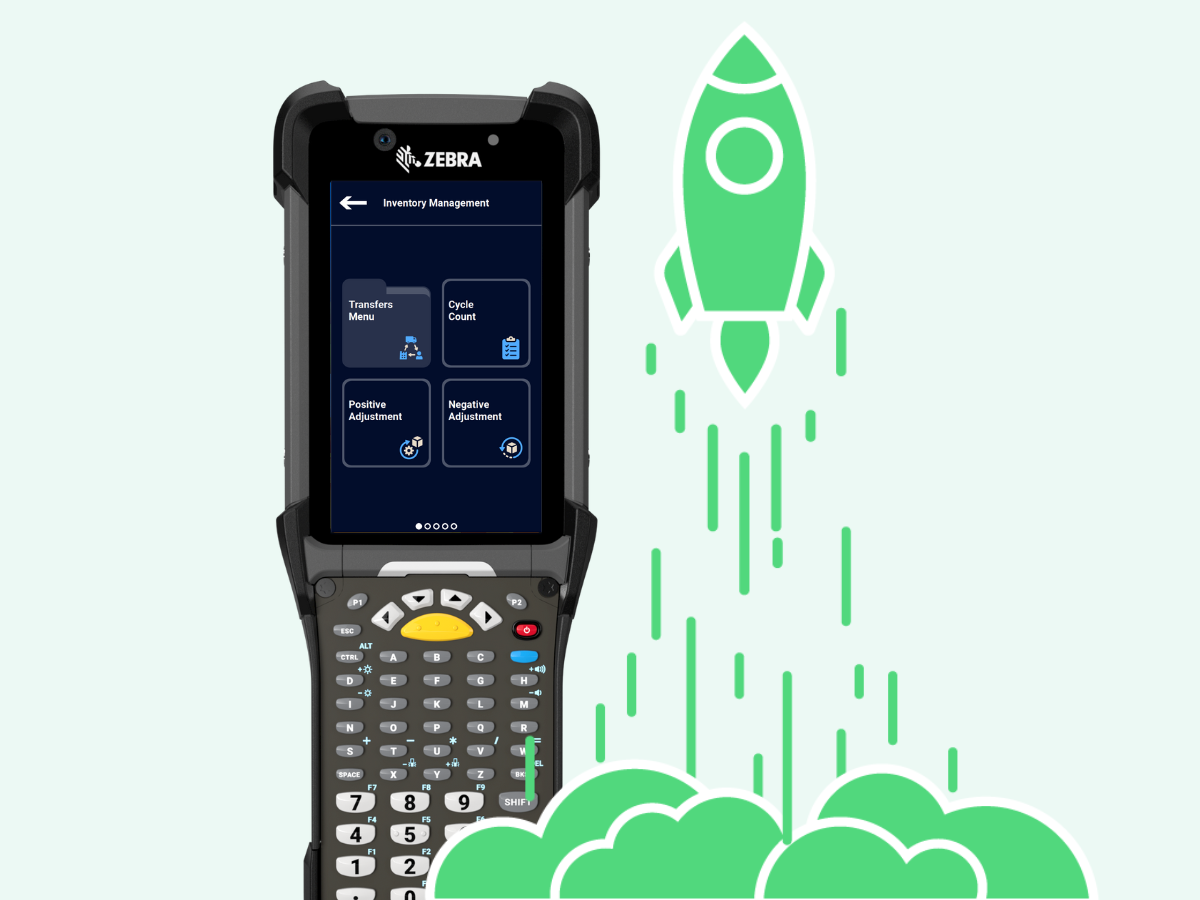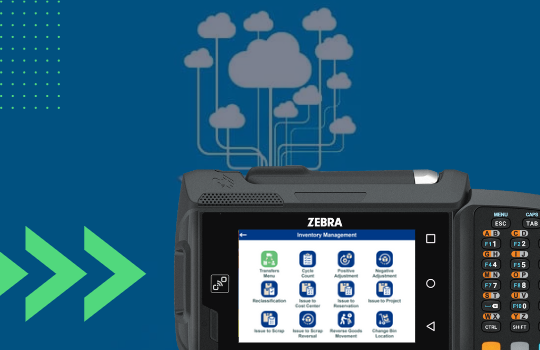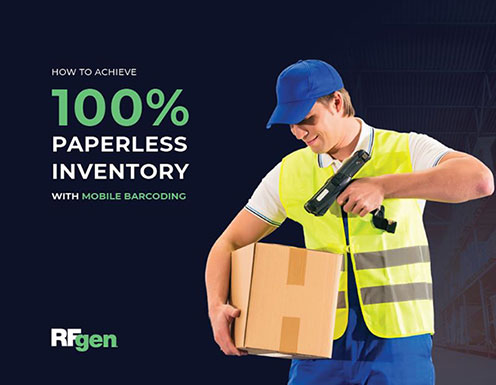Cloud-Based vs. Traditional On-Premise ERP Systems: A Guide
- Digital Transformation
- ERP Systems

Enterprise Resource Planning (ERP) systems deliver incredible benefits to the businesses that implement them. A foundational element in digital transformation strategies, ERP systems help organizations face evolving challenges and control costs.
ERP systems can be deployed one of two ways: in the cloud or on-premise (“on-prem”).
What are the key differences between cloud-based ERP systems and traditional ERP systems?
With the ERP landscape continually evolving, understanding the distinct advantages, limitations, and applicability of both deployment types is crucial.
In this article, we will explore and compare both cloud ERP and on-prem ERP systems. It seeks to not only demystify the complexities of these systems but also provide practical, real-world insights, including its implications on supply chain management.
This way, you can make an informed decision that aligns with your business’s unique needs and goals.
Overview of Traditional On-Premise ERP Solutions
Traditional on-premise ERP systems have been the cornerstone of enterprise resource management for decades. These systems are installed on a local server and are managed by the company’s IT staff, offering a high degree of control and customization.
On-premise ERP solutions are known for their robustness and ability to be tailored to the specific needs of a business. This makes them a preferred choice for organizations with complex processes or those in heavily regulated industries.
Industries like aerospace and defense still favor on-prem ERP deployments due to the need for heightened security controls and clearances.
Typical use cases for on-premise ERP systems include large corporations with the capital and infrastructure to support such installations. Businesses in sectors like manufacturing, healthcare, and finance have historically favored on-prem deployments because of the freedom to customize and control data.
Despite their benefits, the rigidity and high costs associated with these systems have prompted many businesses to explore more flexible and cost-effective alternatives, such as cloud-based ERP solutions.
Examples of on-premise ERP systems include:
- Deltek Costpoint
- Oracle E-Business Suite
- Oracle’s JD Edwards
- Oracle PeopleSoft
- SAP ECC
- SAP S/4HANA (non-cloud)
Watch Video: Move Ahead with Mobile Manufacturing Solutions
Key Characteristics of On-Premise ERP Systems
What are the key features of on-premise ERP systems? The most common key characteristics include:
- Presence of physical server on location
- Full customization and control of source code
- In-house maintenance and updates can be managed in-house
- Data security: not connected to the internet
- Uses perpetual licensing models for software (company owns the software)
- Offline operations possible
The security of on-premise solutions is largely in the hands of the organization. This can be a double-edged sword, offering greater control but also demanding more responsibility for data protection and compliance with regulations.

EXPLORE: Mobile Inventory Solutions for On-Prem ERPs
READ NOW »Drawbacks of On-Premise ERP Systems
On-prem ERP systems aren’t without their drawbacks, however. These drawbacks include:
- High initial capital expenditure
- Long deployment time
- Limited accessibility due to physical location of servers
- Hardware-dependent performance
- Low scalability due to lack of standardization
- Integration with other systems often requires custom development work
A big concern for many companies when evaluating on-premise ERPs is the high initial cost. Substantial initial investment is required for hardware, software licenses, and implementation. Although the company may own the software completely, the system may incur significant ongoing costs for maintenance, upgrades, and dedicated IT staff.
Introduction to Cloud-Based ERP Systems
Cloud-based ERP systems represent a paradigm shift in enterprise resource management, offering a more flexible and scalable solution compared to on-premise systems. These systems are hosted on the provider’s servers and accessed via an internet connection.
Not only does this eliminate the need for significant upfront hardware and software investments, but updates can be delivered regularly, automatically, and without breaking custom code.
While not every business can adopt a cloud ERP system for security reasons, cloud-based ERPs are quickly becoming the de facto deployment method for today’s enterprise.
Cloud-based ERPs are particularly advantageous to organizations looking to simplify their technical landscape. A growing trend involves organizations reducing the number of their ERP systems and replacing them with a single cloud instance. This “landscape simplification” is aimed at increasing efficiency, data visibility, breaking down data silos, and reducing IT costs.

Migrating from Legacy ERP to Cloud ERP: Impact on Data Collection
LEARN MORE »Cloud-based ERP solutions are particularly advantageous for businesses that need a fast deployment or have fluctuating demands, or those looking for a solution with lower upfront costs and easier maintenance.
Examples of cloud-based ERP systems include:
Key Characteristics of Cloud-Based ERP Systems

Cloud-based ERPs offer a number of features. Key characteristics include:
- Low initial investment (SaaS subscription model)
- Fast deployment time
- Standardization of all processes and workflows
- Automatic updates
- Hosted on vendor’s servers (minimal maintenance)
- Scalability due to locked standardization
Perhaps cloud’s biggest advantage in the ERP space is standardization. This makes integration with other technologies simpler while enhancing data visibility across different departments and locations. In addition, cloud ERP platforms place much less burden on internal IT staff than on-prem equivalents.
And with a SaaS subscription model, companies don’t have to pay the large initial price tag associated with on-premise ERPs. Support doesn’t require on-site staff, so can be managed remotely and/or through a third party.
Drawbacks of Cloud-Based ERP Systems
Although cloud ERPs represent the “next gen” of enterprise resource planning platforms, they are not without their drawbacks. Drawbacks include:
- Lack of customization (no access to base code)
- Can’t migrate custom functionality from other ERP systems
- Data security—but improving
- Reliance on internet connection
- No offline operations possible without custom solution
Concerns remain around data security and limited customization compared to on-premise systems. However, as cloud technology advances, these issues are increasingly being addressed.
Reliance on internet connectivity remains a challenge. Connection interruptions from internal networks or internet access can disrupt mission-critical operations.

What to Know About Mobile Security with Cloud ERP
READ NOW »Breakdown of Tangible Practical Implications
When evaluating the pros and cons of cloud ERP versus on-prem, consider the practical implications. Choosing one over the other can significantly impact the way a business operates.
To review, here’s a breakdown of these implications:
Cloud-Based ERP System
- Cost: Low upfront cost, but indefinitely recurring.
- Deployment: Fast to deploy, doesn’t require physical infrastructure.
- Customization: Limited customization except with third-party solutions.
- Performance: Not limited by hardware but limited by internet connection.
- Security: Relies on hosting provider—room for improvement.
- Maintenance: Minimal burden on IT and can be maintained remotely.
- Scalability: Easily extensible and scalable.
On-Premise ERP System
- Cost: High upfront cost but wholly owned.
- Deployment: Slow to deploy, requires physical infrastructure.
- Customization: Full customizable.
- Performance: Limited by hardware but not by internet connection.
- Security: Relies on ERP owner; the most secure but also highest responsibility.
- Maintenance: High IT burden that requires on-site specialist(s).
- Scalability: Extensible but difficult to scale.

Investing in Warehouse Innovation: How to Evaluate ROI
DOWNLOAD NOW »Comparative Analysis: Cloud-Based vs. On-Premise ERP Systems
When comparing cloud-based and on-premise ERP systems, several key factors emerge:
Cost
The most apparent difference lies in the cost structure. On-premise ERPs require a hefty initial investment for hardware, software licenses, and implementation, followed by ongoing expenses for maintenance and IT staff.
In contrast, cloud-based ERPs operate on a subscription model, often resulting in lower upfront costs and a predictable monthly fee that includes maintenance and updates.
Scalability and Flexibility
For those wondering about how scalability differs in cloud ERP compared to on-premise systems, this is where cloud-based ERP shines. They allow businesses to quickly adjust resources to meet changing demands without significant hardware or software modifications.
On-premise solutions, while robust, lack this level of agility, often requiring physical upgrades or costly development to scale up.
Security
Security considerations differ markedly between the two. On-premise systems offer businesses complete control over their data security, which is crucial for certain industries. However, it also places the responsibility of maintaining high-security standards entirely on the organization.
Cloud-based ERPs, on the other hand, rely on the provider’s security measures, which can be a concern for businesses handling sensitive data. Nevertheless, reputable cloud ERP providers invest heavily in security, offering advanced measures that may be challenging for individual organizations to replicate.
Maintenance and Upgrades
On-premise ERPs often require a dedicated IT team of specialized personnel for maintenance and upgrades, which can be both costly and time-consuming.
Cloud-based systems, in contrast, are maintained and updated by the provider, ensuring businesses have automatic access to the latest functionalities and security features without additional effort or cost.
Customization and Integration
Traditional on-premise systems offer extensive customization options, allowing businesses to tailor the ERP to their specific processes. This level of customization can be a double-edged sword, as it can lead to complex, hard-to-maintain systems.
Cloud-based ERPs, while offering some level of customization, rely on standardization. This can be limiting for businesses with highly specialized needs. However, this standardization often translates into easier integration with other cloud-based systems and applications.

Preserve Custom Functionality when Migrating to Cloud
LEARN MORE »Implications for Supply Chain Management
Modern supply chain management depends on ERP systems to keep materials flowing. While there is no “right” answer for which ERP to use, companies that engage in supply chain activities like inventory distribution, manufacturing, and logistics must consider their unique business needs. The factors outlined above still hold true.
Using multiple on-prem ERP systems has proven problematic in an age of visibility. Today’s companies need accurate, real-time data that updates the ERP—or multiple ERPs—as work occurs. Data must be flawlessly collected, analyzed, and leveraged to enable strategic decisions, lower costs, and improve efficiency.
For the foreseeable future, expect supply chain companies to continue consolidating ERP systems. Many of the “last gen” on-premise ERP systems are expected to be left behind in favor of the latest cloud-based platforms.
When transitioning from traditional to cloud ERP, don’t forget about data collection.

How to Achieve 100% Paperless Inventory
DOWNLOAD GUIDE »The Future of Enterprise Resource Planning Systems
The future of ERP systems is shaping up to be more integrated, intelligent, and user-friendly, with a strong emphasis on cloud-based solutions. Advancements in artificial intelligence and machine learning are expected to play a pivotal role, allowing for more predictive analytics and automated decision-making.
The integration of IoT (Internet of Things) technology will further enhance real-time data collection and analysis, improving supply chain and operational efficiency.
Additionally, there will be a focus on enhanced user experience through more intuitive interfaces and mobile accessibility, making ERP systems more accessible across different levels of an organization.
This evolution will drive ERP systems to not only be a tool for managing business processes but also a strategic asset that can offer insightful business intelligence and foster innovation.

Build vs Buy: Know When to Build a Mobile Solution or Buy It Pre-Made
DOWNLOAD NOW »Cloud ERP vs On-Prem ERP: The Bottom Line
The choice between cloud-based and on-premise ERP systems hinges on specific industry needs, customization, and IT burden considerations. While more businesses will be moving to cloud as time goes on, for others, on-premise ERP systems are still a requirement.
Regardless of which ERP deployment type is the best fit for an organization, taking the time to properly understand the differences between the two, as well as the advantages and drawbacks, can help align important decisions with the company’s strategic goals.
With a big technology investment like an ERP system, it’s better to have all the knowledge up front to make the best choice for your business.




